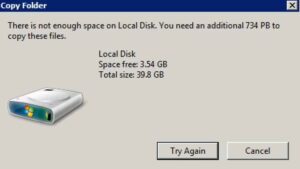We all need storage and we need a lot!

Back in the early days I started with WordPerfect 4.0 (1984). If you typed “Hello World!” it was about 80 bytes. If you now a days type “Hello World!” in Word 2016, it’s 12 Kb. This seems not much, but there is way more overhead in the file then 20+ years ago.
Files are getting bigger and bigger, 4K video is around the corner and we want to have data of every device we connect to the internet. Loads of Storage is also used for the visualized servers.
SAN, NAS are “old” technologies which a lot of companies are using for ages. Sometimes it can be complicated and that’s why there are “Storage Experts“.
Converged Infrastructure was the first step into a new direction. Compute, Network, Storage and hyper-visors have good adhesion between the vendors and most of the time it’s automated.
Hyper-convergence is not only a buzz-word since last year, it’s growing.
Here are 5 reasons to choose for a Hyper Converged Infrastructure :
5 : Cost savings
This is what you hear from every hyper converge vendor and is it true ? You need the compute to visualize the servers and there is some space in it, so why not put disks in it. The only disadvantage of some systems is the software to run storage on the boxes. It’s not cheap…. But neither are SAN‘s. To have redundancy you will have more boxes and overall the price it’s hard to compare.
4 : Small footprint
Hyper converged is (most of the times) only software. It can run on you existing or new servers with SSD and/or HDD in it. The need for a very big SAN/NAS with diskshelfs and heads are not needed.
3 : Software only
The software runs on x86 CPU’s of intel and you don’t need any special servers and/or hardware. So no vendor lock in of the hardware. Because it’s only software it can combine servers to become one big pool of storage.
2: Easy to scale up and to scale out
With some systems you need to buy a complete box, just when you have more storage needed. But this is not with all vendors. The trend is to go to independent scaling of compute. Just add more storage or compute when you need it. With hyper converge it’s easy to add more storage without any downtime. So you can use a pay as you grow model.
1 : Simple…… for non storage experts !
In a SAN or NAS environment, as a server guy or visualization guy, you need to ask to the storage guy for some storage when you want to roll-out some servers. Some companies have this automated, but a lot of companies are still doing this with change requests. The biggest advantage is that the server guy now easily can create it’s own storage in an environment he/she knows, like vCenter. No knowledge and trouble with WWNP, LUN’s, Volumes etc. The GUI is very simple to use, so you don’t need experts to easily create storage for your VM’s.
And of course a lot of Hyper Convergence software can be automated by orchestration tools like Cisco UCS Director.
Is it to good to be true ?
It seems that Hyper Converged is way better then SAN/NAS and is it ? What about enterprise features and IOPS. How are the performance of the Hyper converged software ?
Some hyper converged vendors created their own File System with a lot of intelligence in it. They can easily add more features to the software, because it’s software. One vendor use Acceleration Cards for inline dedup and compression. Other vendors relay on the CPU’s. I only got access to small hyper converged boxes without any redundancy, so I can’t test them yet on IOPS, redundancy etc.
For a traditional Storage customer, hyper converged can be deployed in a small VM environment and keep the current FC/FCoE storage. Maybe it won’t replace the whole current storage environment, but Hyper Converged is certainly something to think about it.



